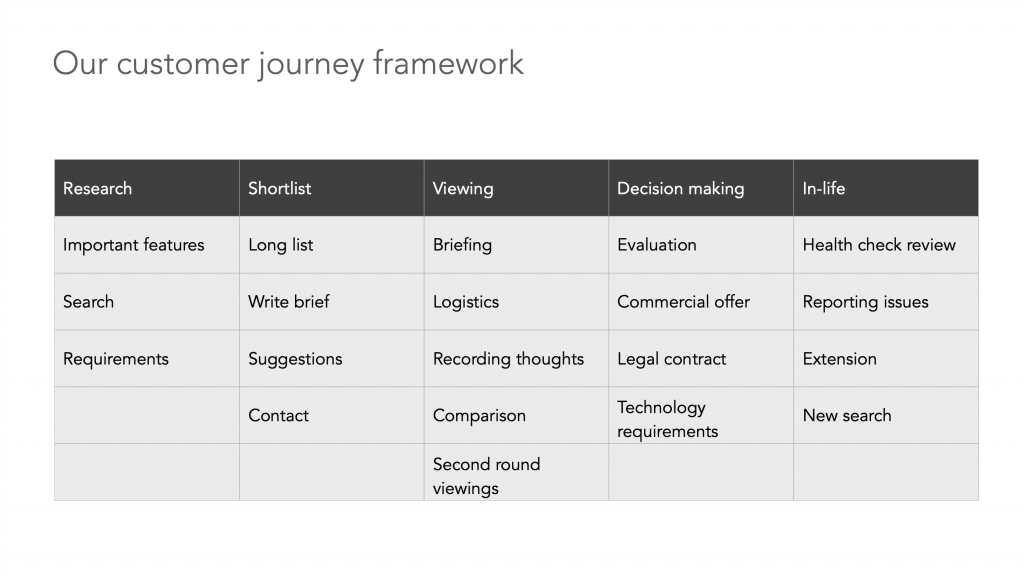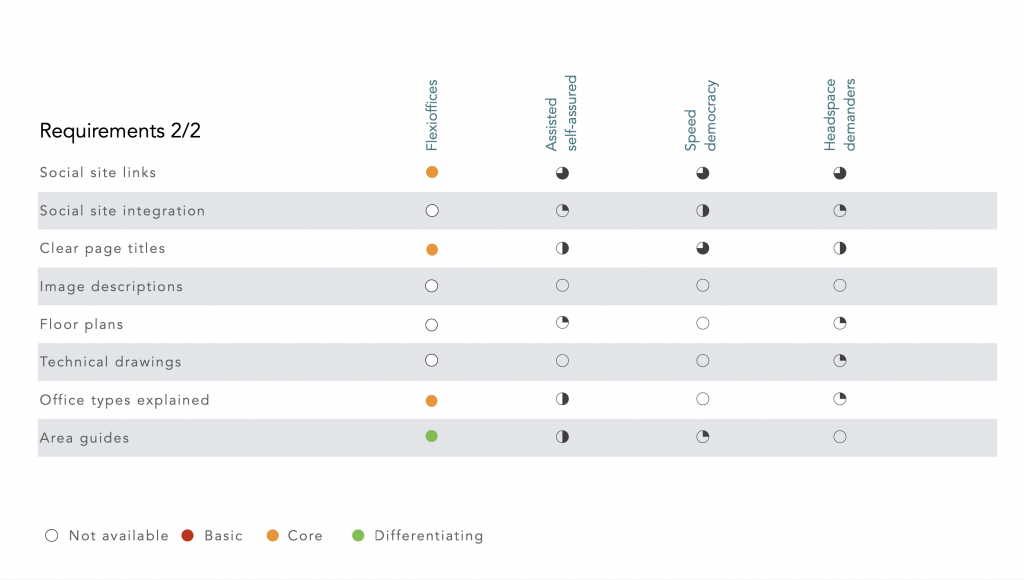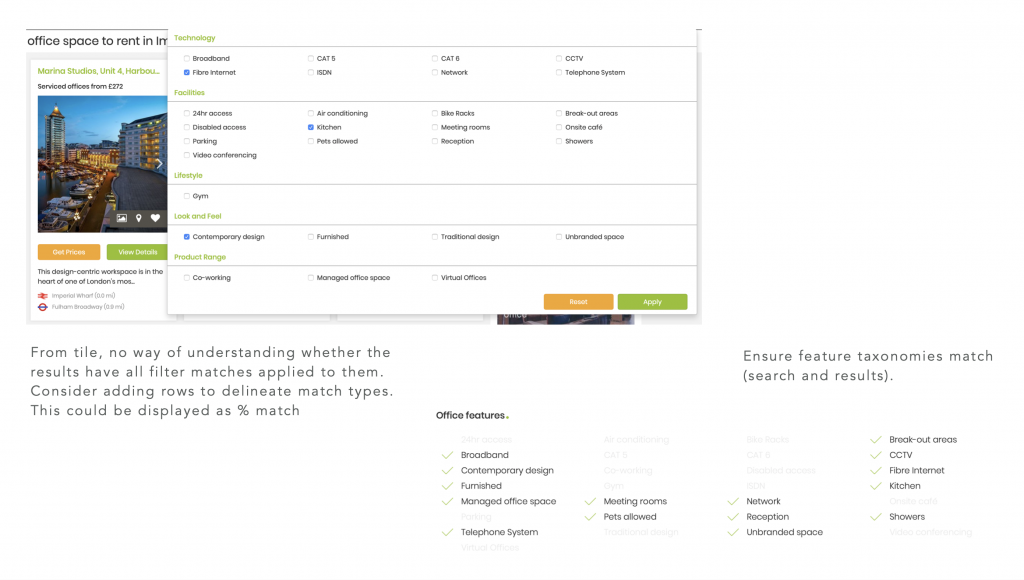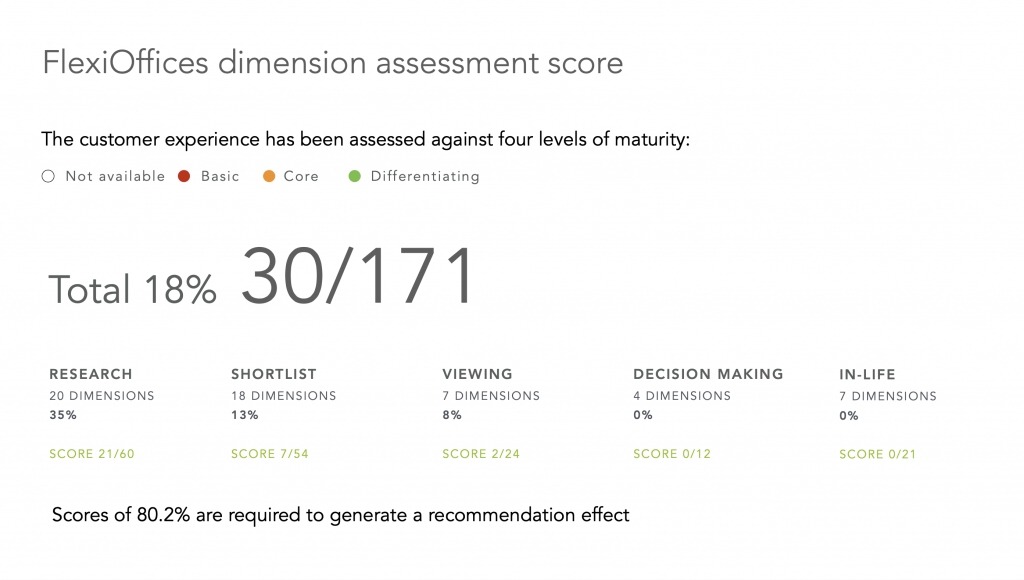
Could our platform conversion improve?
Methodology
Many organisations ask themselves, “How good is our platform?” They worry about it working as hard as it could.
The most typical desired results are:
- We want to increase conversions
- We want to increase the basket size
- We want to reduce the bounce rate
- We want more returning customers
- We want more subscribers/registered customers
Platforms evolve over time, there’s rarely a single document that summaries the strategy connecting to features. It could well be that features your customers expect are missing completely.
To understand what there is, how good it is and where you need to focus efforts to achieve the desired results, you need to pull the platform apart into individual features. Only then, can you move forwards without being stuck on the dreaded quick wins treadmill.
Let us look at the process in more detail:
- Review customer journey documentation today
- Extract customer needs and goals from primary research
- Create feature dimensions, noting specific items where the organisation is multi-category
- Review each feature for devices as identified from analytics
- Note scoring, capture UI and write annotation
- Review customer journey stage maturity and create a backlog of actions to achieve the desired goal
Outcome
Understanding what your organisation has, hasn’t, and how mature it leads to conversations around how mature a specific needs to be. It asks: will this generate us the result, at what investment and with what resource. It enables the organisation to make better decisions on how to plan its roadmap.
Maturity is assessed as:
- None – the feature isn’t available or not findable
- Basic – the feature enables the customer to meet their goal, with some effort and possible friction
- Core – the feature enables the customer to fully complete their goal
- Differentiating – the feature enables the customer to fully complete their goal and does so in an interesting and memorable way
Timeline: 6 weeks
- 2 weeks – comb the customer research to extract needs and document the Customer Journey Framework (features to be assessed)
- 4 weeks – review each feature, score and document
- 1 week – process scoring and write opportunities as summary





Understand your features and opportunities
Focus on improvements that increase subscriptions, returning customers or sales
Evaluation & Benchmarking
Could our platform conversion improve?
Do you know how mature features are across your entire platform? Are you interested in where improvements need to be made to increase conversion – be that subscription, returning customers or sales
How do we compare to the competition?
Do you regularly review your competitors to play catchup? Does it feel like you’re always one step behind them in launching new features?
Is our customer journey fit for purpose?
Are you concerned areas in your customer journey aren’t up to scratch or generate poor experiences and costs for the organisation?